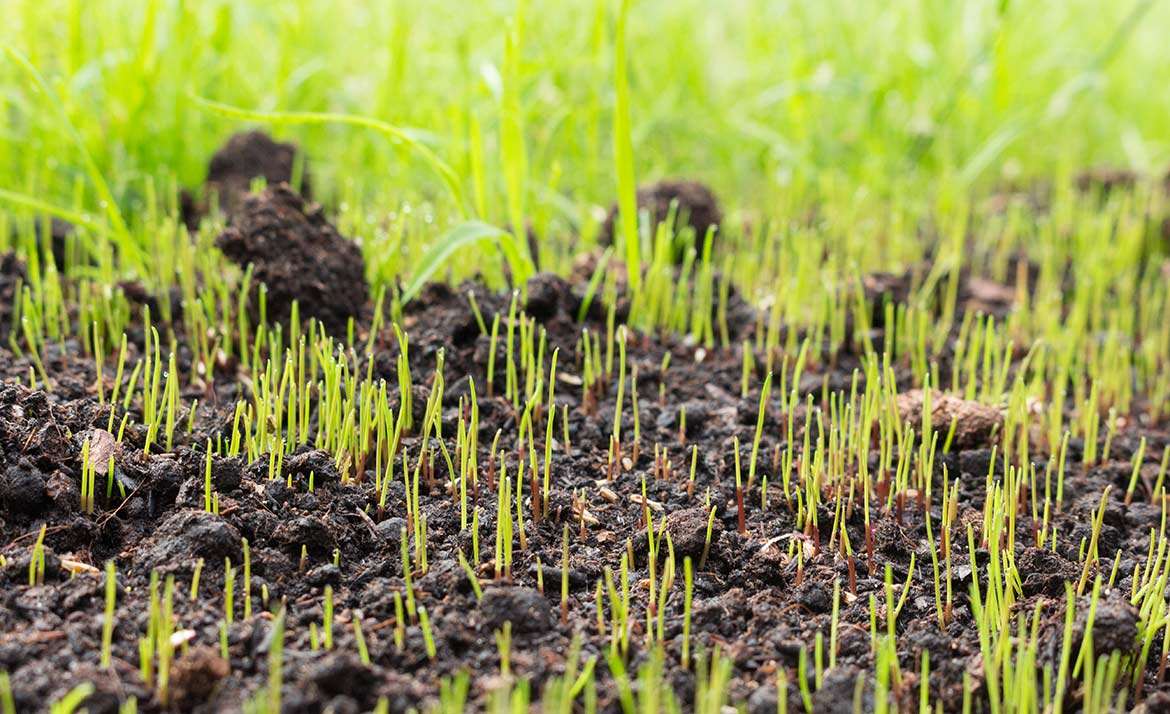Planting seed is a lot like pursuing a goal. With a little luck and a whole lot of work, both can grow into something great!
Whether you’re overseeding or prepping to plant a new lawn, these general guidelines will ensure your seeds grow to their fullest potential.
Note: These are basic guidelines for irrigating after seeding. Depending on your location conditions will vary. You may need to irrigate more or less depending on the weather.
Step 1. Check to make sure your irrigation system is ready to go
Ideally, you would do this before spreading seed as a preventative measure, but if the seed is already on the ground, there’s still benefits in giving your system a few tune-ups.
Dennis Kemp, Ewing’s Turf Products Sales Specialist said, “Check your sprinkler system to make sure sprinkler heads are level and coverage is even.”
This will ensure the entire area that has been seeded receives water.
Step 2. How to water after the seed drops
After you’ve dropped the seed, water the lawn four to six times during the day.

“That first two-week period is very important. You really need to be able to watch your system closely,” Kemp said.
As a general rule, if you are watering with spray heads, runtimes should last three to five minutes. If you’re using rotors, extend runtimes to 10 to 15 minutes.
“It takes five to seven days for the seeds to germinate,” Kemp said. “With that in mind, you will likely need to maintain this program for at least 10 days.”
The main take away here is to avoid allowing water to puddle (which can suffocate the seeds), while still watering frequently enough to keep the ground moist.
Step 3. How to water once the seed germinates
Once the seed has germinated, it’s time to start pulling start times to prevent overwatering.
Gradually taper off by eliminating one to two start times per day (one in the morning and one in the evening). This will take around three to five days.
Kemp said once the seed reaches its third or fourth leaf stage, it’s time to move back to your normal watering program.
Pro Tip: Because every seeding situation will be slightly different, invest in person time to watch over the process.
“Being onsite allows you to adjust to the conditions as they change,” Kemp said.
What part of the country do you live in and what does seeding or overseeding irrigation look like for you?
Download Ewing's white paper, Renovating Your Lawn for Better Health and Appearance of Your Turf.




